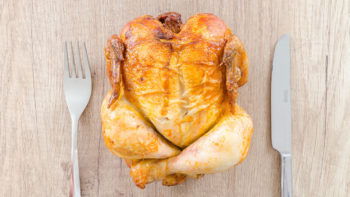Do you wish you had more motivation or time to prepare hot, fresh, homemade meals for yourself or your family?
Being someone who either doesn’t like to cook, doesn’t know how to cook, or just doesn’t have time to cook can feel like enough of a reason to stay out of the kitchen unless absolutely necessary.
It might seem daunting, but there are lots of things you can accomplish, hands off, with a little strategic thinking and strategic selection of ingredients.
Prep Work
It helps to first redefine the goal: getting good, healthy, hot food on the table, perhaps with leftovers for lunch.
That means the goal is not to recreate a meal you had in a restaurant, make something you can post on instagram, or have anyone tell you this is the best meal they ever had.
Cooking clean, simple, healthy meals is actually pretty straightforward. And knowing that this is what you’re doing can take a lot of the pressure off.
It really comes down to the simple practice of handling basic, whole ingredients well and allowing them and a little bit of heat to do most of the work for you.
All you’ll really need is less than 10 minutes of hands-on time, a little salt and some olive oil, and you can put food on the table any day you want. So let’s get going.
First Course – Vegetables
One of the main obstacles to even wanting to step foot into the kitchen to cook a meal is the prep you have to do before you even fire up a burner.
So the first thing (or category of things) you should buy from is pre-prepared foods. You can get tons of stuff already prepped — cleaned, peeled, and cut — at the market:
- Broccoli
- Cauliflower
- Carrots
- Squash already cubed
These you can toss in a bowl with oil, season with salt and pepper, and put into a preheated 425-degree oven. You can use a sheet pan if you have one or just a sauté pan if you don’t.
Broccoli, cauliflower and carrots will take about 25 minutes. Sweet potatoes or squash will take about 40 to 45 minutes. And you’re done — you have hot, fresh roasted veggies. Drizzle with a little more olive oil, and if you’re ambitious, sprinkle with some chopped herbs.
Then you have things like:
- Peas
- Green beans
- Snow peas
- Snap peas
Drop these guys into a big pot of boiling salted water for 2 to 3 minutes, drain them, toss with olive oil or butter, herbs, a squeeze of lemon or a dash of vinegar, season with salt and pepper, and you are ready to go.
And with some bagged lettuces, any of these vegetables can be made into a great salad. Especially if you add some simple ingredients like nuts or a little dried fruit.
Just remember, a standard vinaigrette is one part vinegar and three parts oil. That’s 1 t vinegar to 1 T oil, add a drop of mustard, salt and pepper, and whisk it together.
Second Course – Meats
Things you can also bring home — and this might be surprising — are large roastable pieces of meat. These are meats that you can simply season and stick in the oven:
- Tri-tip
- Sirloin roast
- Top round roast
- Eye of round roast
- Pork loin
- Whole chicken
These larger pieces of meat have a few advantages. They allow for hands off cooking — no need to sear in a pan and hope you don’t burn the outside before you cook the inside, no splattering all over the stove — and, maybe best of all, you have leftovers when you cook something large.
Just season all over with salt and pepper, then put into a hot oven. Cook at 300-350 degrees (150-175° C) for the beef or 450 degrees (230° C) for the chicken until done. It’ll be done when the temperature of the meat is 120 degrees (50° C) for the beef or 155-160 degrees (70° C) for the chicken. (That’s about 50 minutes for an average 3-4 lb. chicken.)
Now, one thing I always insist on when you’re cooking meat is a good thermometer. If you don’t have one, get one!
To finish the beef, pull it out, crank up the oven to its highest temp and stick it back in for 5 or 6 minutes until it gets a nice color on it and you’re done.
You don’t even need a special pan — a standard oven-safe sauté pan will do as long as the meat fits.
Ten more minutes of resting on the counter and you can slice and eat.
Some After Dinner Thoughts
These are just a few things to get you started in the kitchen even if you don’t like the idea of it.
With just a few items like already prepped vegetables, a strategically selected piece of meat, and some garnish ingredients like nuts or dried fruit, you can enjoy lunches and dinners with a variety of:
- Roasted or blanched and seasoned vegetables
- Roasted meats
- And simple salads
These, along with our one-pot meals, will have you cooking a whole repertoire of meals in no time at all.







